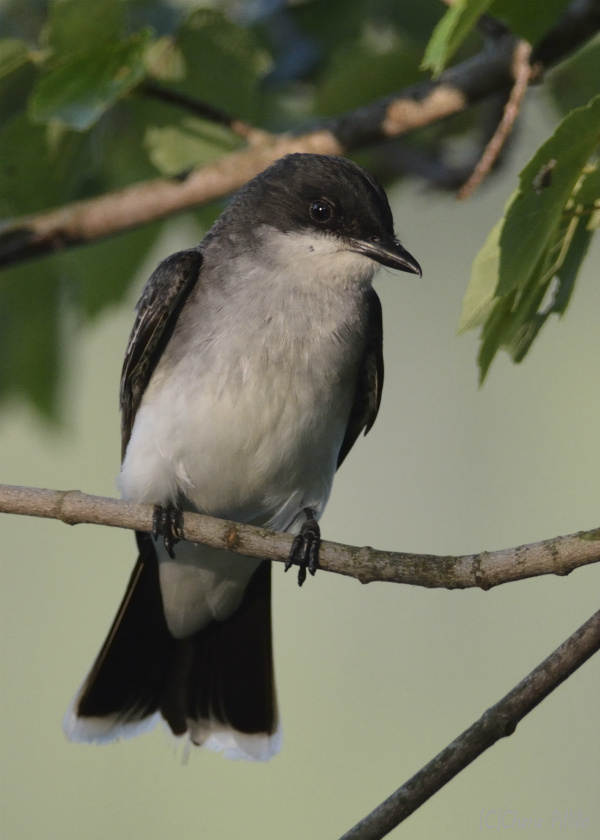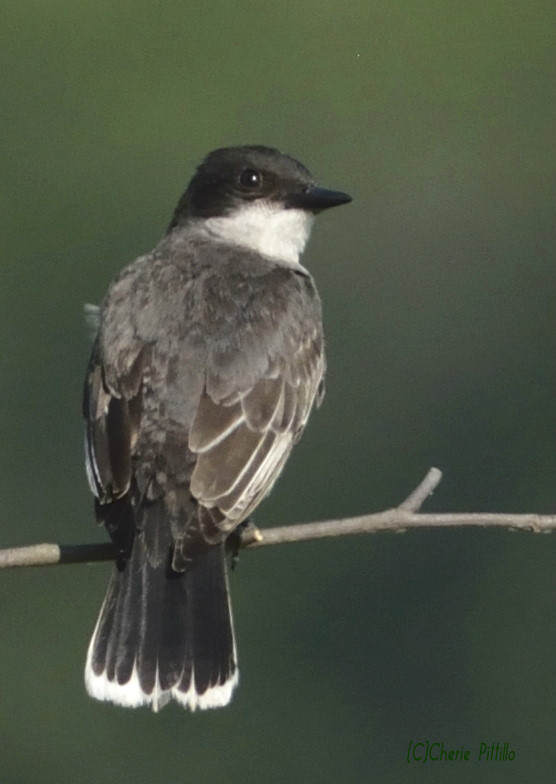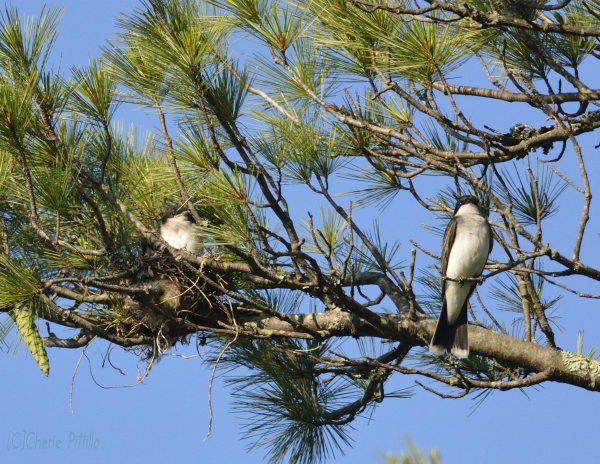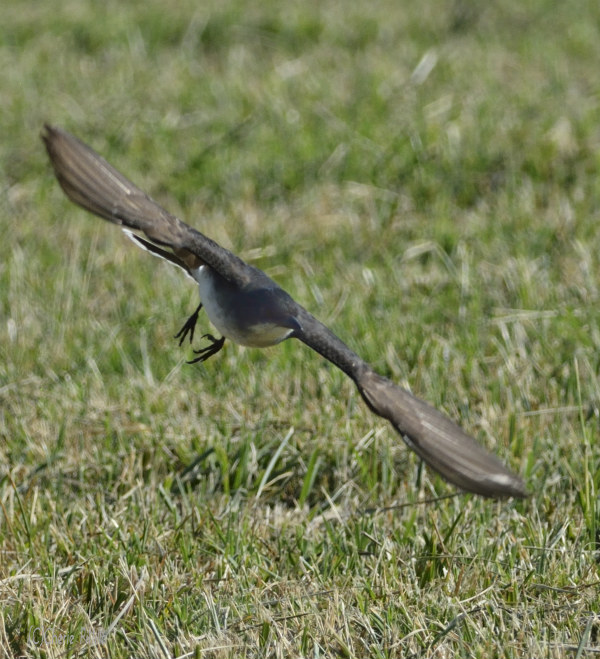Eastern Kingbird, Tyrannus tyrannus, Tirano Dorso Negro (Spanish), Sak x takay (Mayan)
Sound link: https://macaulaylibrary.org/audio/106791
One of my first observations of an Eastern Kingbird occurred in my Merida backyard view. When I saw that white-tipped tail, I knew this species!
Then it flew towards the parking lot across from the Merida English Library. I grabbed my camera to be rewarded with not one, but two Eastern Kingbirds sitting atop a tree. That reward was short-lived when a Grayish Saltator pursued one of the kingbirds and pestered both. Those migrants departed quickly as they had stopped over in the Yucatan, usually August-October, on their way to spend their winter in South America. To return north they can pass through the Yucatan March-May.
What a surprise to see the young saltator chase away the kingbirds! Eastern Kingbirds belong to the group of tyrant flycatchers, well-known for their aggression and harassment toward other birds even as large as Great Blue Herons. Their scientific name, Tyrannus tyrannus, hints at that nature. However, during migration through eastern Mexico and the Yucatan, the Eastern Kingbirds reduce their belligerence without a nest to defend or a territory to mate.
Speaking of nests, I photographed this nest, built by the female, near the top of a pine tree in North Carolina. That white chest of the male looked as bright as a lighthouse which attracted my attention. By the way, to attract a mate, the male kingbird can turn backward somersaults, zigzags, and other Cirque de Soleil maneuvers. The pair is more or less monogamous during the breeding season.
Both parents left the nest to capture insects for their brood. Note the hooked bill. Remember this kingbird is a fly-catcher along with beetles, grasshoppers, wasps, bees, and other insects. However, it may supplement its summer diet with berries.
Many references state how the kingbird sits on a perch to wait until an insect comes near. It sallies forth or hawks to capture the insect in mid-air. Wonder if it uses its “hawk eye”? Certain scientists state the majority of tyrant flycatchers don’t forage that way especially when feeding during cool temperatures, a cloudy sky or in forests. The Eastern Kingbird then may forage on the ground or gather food from foliage. I certainly observed them hawking more than feeding on the ground.
But wait, there’s more.
A bird with a common name of Eastern Kingbird implies it lives in eastern North America. (In birding that means Canada and the US, not any countries south of the US border.) But it’s also abundant west of the Mississippi River and into Canada. I can state that the Eastern Kingbird is the most abundant kingbird in the east.
The Eastern Kingbird loses its attack mode of anti-social behavior, joins in a flock of kingbirds to migrate mainly during the day unlike many migrant species that travel at night. At its South American winter home, this insectivore turns into a party animal as it feeds in flocks on tropical fruits.
Sounds like other party animals at Carnival in that part of the world.
YOU DON’T HAVE TO TURN ANY SOMERSAULTS TO EXPLORE NATURE BUT YOU HAVE TO TAKE TIME TO GO OUTDOORS.
DISCLAIMER: References do not agree on details about this species. Life of the Flycatcher, https://test.birdsna.org/Species-Account/bna/species/easkin/introduction, Sal a Pajarear Yucatan Guia de Aves, A Guide to the Birds of Mexico and Northern Central America, Birds and Reserves of the Yucatan Peninsula, Sibley Guide to Bird Life and Behavior, Lives of North American Birds, Randolph S. Little/Macaulay Library at the Cornell Lab, https://www.allaboutbirds.org/guide/Eastern_Kingbird/lifehistory
Cherie Pittillo, “nature inspired,” photographer and author, explores nature everywhere she goes. She’s identified 56 bird species in her Merida, Yucatan backyard view. Her column, published on the 7th and 21st of each month, features anecdotes about birding in Merida, Yucatan and beyond. Contact: [email protected] All rights reserved, ©Cherie Pittillo











